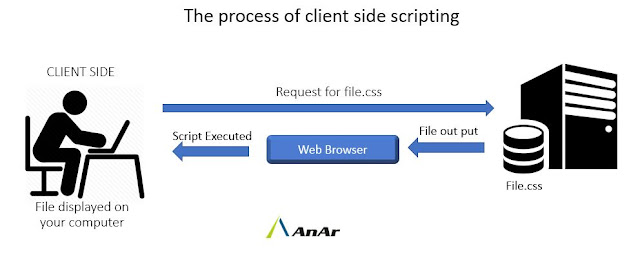Previous Link
https://hemchandralive.blogspot.com/2018/08/aos-assignment-1-part-1-opensource-vs.html
Section 2 :
This case study of Linux vs. Windows distinguishes between the operating systems market for end users - of a desktop operating system (client) - and the market for server operating systems (server).
The most interesting battle today is at the server-side.
Here we discuss about the
(i) Client Side
(ii) Server Side
(iii) Interaction of Server - Side and Client - Side
(i) Client Side
(ii) Server Side
(iii) Interaction of Server - Side and Client - Side
(i) Client Side
Some studies suggest that the market-share of Linux at the client-side is around 3% and some expect it to reach 7% by 2007.'
This slow growth
(i) can be attributed to lack of ease of use, small variety of applications and
(ii) problems with drivers that enable users to connect other devices to their computing systems.
Linux has been mostly an operating system for power-users who have Unix-like skills, but this may change since the open source community is developing several friendly user interfaces such as KDE
(K desktop environment).
(i) can be attributed to lack of ease of use, small variety of applications and
(ii) problems with drivers that enable users to connect other devices to their computing systems.
Linux has been mostly an operating system for power-users who have Unix-like skills, but this may change since the open source community is developing several friendly user interfaces such as KDE
(K desktop environment).
Switching costs from the dominant Windows operating system make it difficult for the Linux market-share to grow fast. Much depends on the relative availability of applications for Windows vs. Linux and the switching costs from the Windows ecosystem to the Linux ecosystem.
There are many open source applications under development, and the open source community has recognized the strategic importance of making their applications similar to the Windows applications to lower user switching costs.
Many open source applications (such as Openoffice, the Mozilla Firefox browser etc.) are also compatible with Windows. Although these applications increase the recognition of the open source community, they strengthen the Windows ecosystem and therefore may hurt Linux in its competition with Windows in the short term.
However, the existence of these open source applications may reduce the switching cost to Linux in the long term. At the same time, there are many proprietary applications that are offered over the Linux operating system.
Therefore, we do not see a pure open source ecosystem competing with a pure .
See http://www.idc.corn
Linux vs. Windows 211 proprietary ecosystem, but two ecosystems both based on a mix of open source and proprietary applications. Understanding the strategic implications of these mixed ecosystems is an interesting question for future research.
(ii) Server-Side
At the server-side, IDC predicts double-digit growth of Linux adoption and that Linux server shipments will reach 25.7% of total shipments in 2008. Linux is "becoming mainstream" and the Linux-based packaged software market is expected to exceed $14 million by 2008.
The total cost of ownership (TCO) of Linux may be higher presently.The migration from Windows environments to Linux is more costly than the migration from Unix to Linux, since Linux is a Unix-like operating system.
'Therefore a significant switching cost is protecting Windows. Both Windows and Linux are gaining market share at the expense of proprietary Unix systems (including the Sun versions of Unix), which tend to be closed and expensive running on expensive hardware.
The Linux ecosystem is developing fast in terms of number, variety and quality of applications and availability of support and other complementary services. However, it is expected that firms that offer competing proprietary solutions will respond in a variety of ways, including the reduction of prices and higher investment in their products. For example, Microsoft seems committed to reduce the security issues faced by Windows.
Uncertainty about potential litigation risks due to unclear property rights and confusing open source licenses also hurts Linux.
Sponsoring of Linux by big IT companies such as IBM and HP is affecting positively Linux because it affects the expectations of customers about the prospects of the platform. These firms are sponsoring Linux by developing or porting their enterprise applications to Linux (such as IBM WebSphere), participating actively in open source projects and initiatives and sometimes leading open source projects, announcing publicly their support and their positive expectations about Linux.
Sponsoring of Linux by European and Asian governments also strengthens Linux.Security problems and risks are hurting Windows.
An independent study has shown that Linux kernel has 0.17 security flaws per 1,000 lines of code,
compared to average 10-20 flaws of proprietary software .
Firms have the option to compile their own for free Linux distribution, by bundling the free Linux kernel with select utilities, but there are several competing commercial Linux distributions (such as Red Hat, SuSe et~. ) .Therefore there is competition within the Linux platform itself, besides the competition between Linux and Windows.
There is a need for more research to analyze that competition and understand the strategies of competing Linux distributors. There is an ongoing process of standardization7 across the different distributions, ensuring that a Linux application can run on all distributions. However, it is uncertain how successful this process will be in the future and whether the risk of "forking" to incompatible distributions will materialize.
The risk of "forlung" is affecting negatively the expectations of potential adopters and the costs of
application developers for Linux, who may need to develop different versions of their applications for different Linux distributions.
The existing literature tends to focus on the development side and not on the demand side. It is unclear how and where firms choose to adopt Linux and open source applications. This may depend on the existing IT infrastructure, capabilities and employee IT skills of a firm, the size and the industry of the firm. Only firms with substantial IT capabilities and resources may switch early. Most
firms are likely to have a mix of Linux and Windows infrastructure evolving over time.
For example, Linux tends to become dominant in Web serving applications, combined with Apache, the dominant Web server application that is open source. Prominent Internet companies such as Google and Amazon rely heavily on Linux.
There is a need for both empirical and analytical work on the conditions under which firms adopt Linux and open source, and how this adoption behavior affects the competition between the two ecosystems.
(iii) . Interaction of Server-Side and Client-Side
There is also a significant relationship between the client desktop-side and the server-side within an enterprise IT infrastructure. Since Microsoft is expected to have dominance at the client operating systems market (and many applications)for a long time this may give it an advantage at the server market too.Alternatively, as Linux increases its presence at the server market, this may encourage its adoption at the client market as well. The European Union court decision, requiring Microsoft to publish some proprietary protocols that define the interaction of clients and servers, may make it easier to introduce Linux clients in networks that depend on Windows servers .









No comments:
Post a Comment